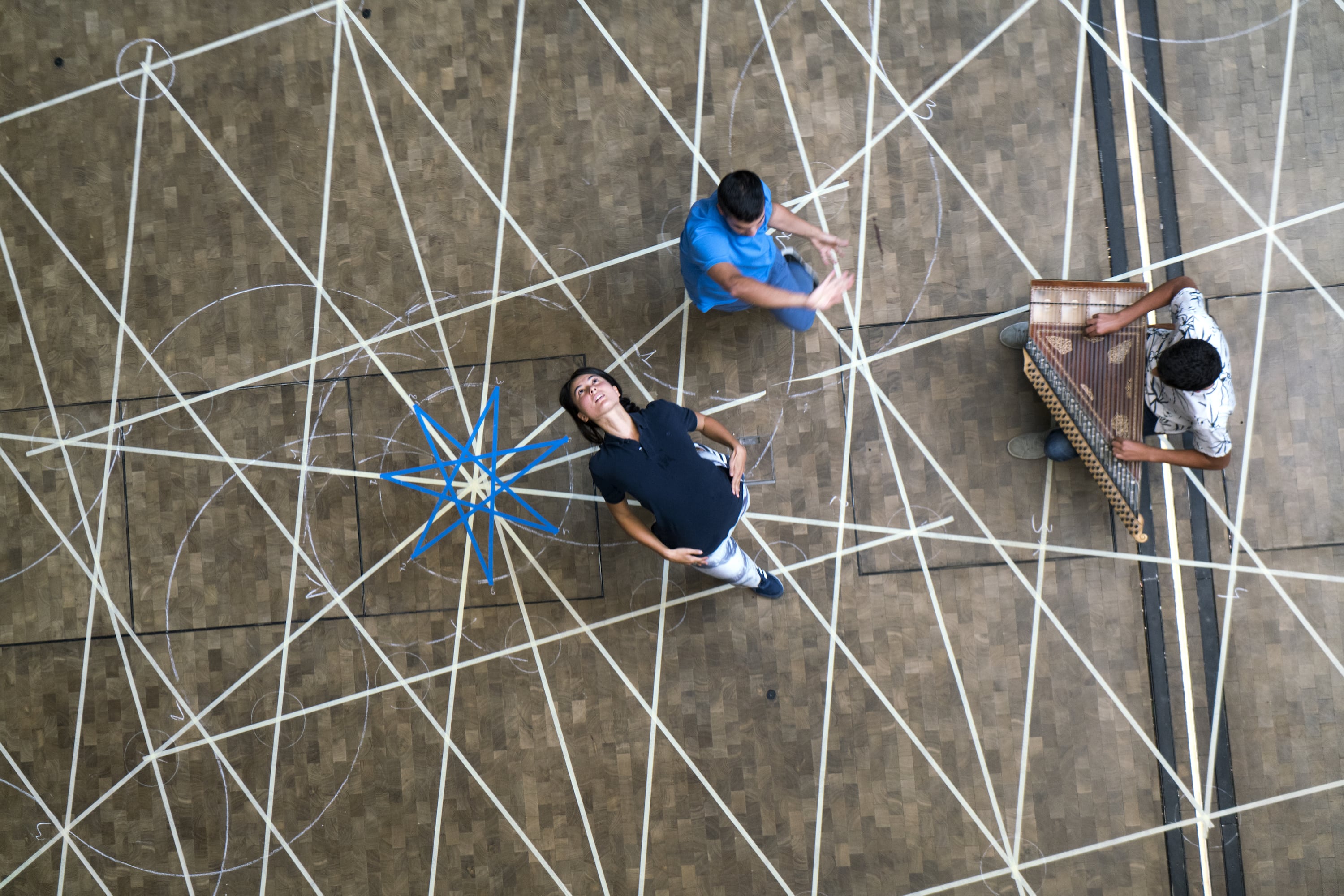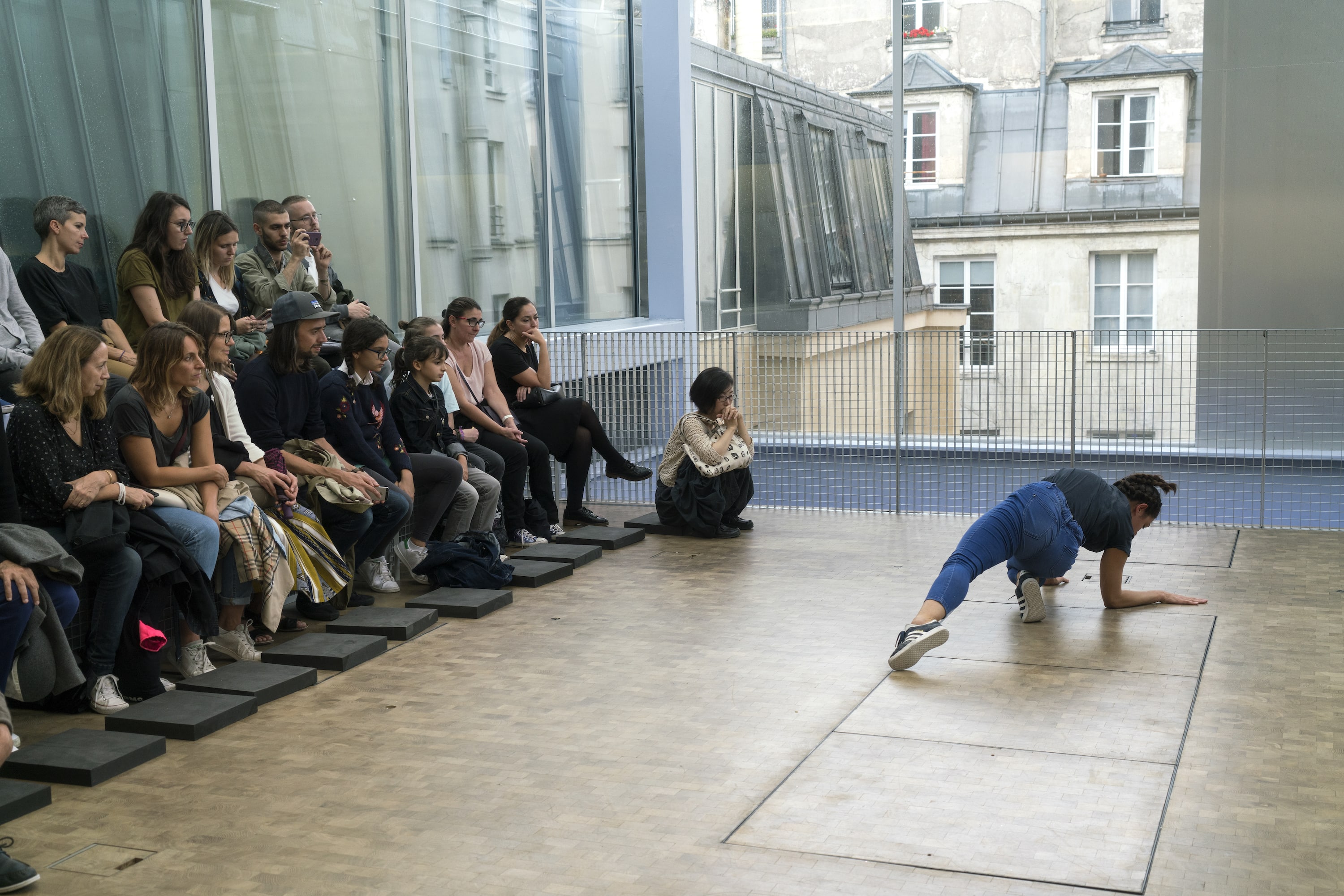






 Radouan Mirziga - 7 (2017). Photo: 1-3: Performance view at La Fayette Anticipations, Paris, 2018. Courtesy of La Fayette. © Marc Domage / Photos 4+5: Performance at Kaaitheater, Brussels during the Kunstenfestivaldesarts 2017. Courtesy of Kunstenfestivaldesarts © Benjamin Boar / Photos 6 and 7: Performance at Teatro Municipal de São Luiz as part of Alkantara Festival, Lisbon, 2018. Courtesy of Alkantara Festival. © Bruno Simão / Video teaser: General rehearsal at Kaaitheater, Brussels, 2017. Courtesy of the artist.
Radouan Mirziga - 7 (2017). Photo: 1-3: Performance view at La Fayette Anticipations, Paris, 2018. Courtesy of La Fayette. © Marc Domage / Photos 4+5: Performance at Kaaitheater, Brussels during the Kunstenfestivaldesarts 2017. Courtesy of Kunstenfestivaldesarts © Benjamin Boar / Photos 6 and 7: Performance at Teatro Municipal de São Luiz as part of Alkantara Festival, Lisbon, 2018. Courtesy of Alkantara Festival. © Bruno Simão / Video teaser: General rehearsal at Kaaitheater, Brussels, 2017. Courtesy of the artist. 7
Each era has its wonders of the world - an impossibility that is nevertheless constructed, more significant and more impressive than anything the world has known. These architectural and artistic feats mark man's victory over his physical limits and the laws of nature. But isn't the human body - the very entity that has devised and made these imposing wonders - even more wondrous? Isn't it more mysterious and more beautiful than the giants we surround ourselves with? How does the body respond to our environment's gigantic architectures, and how would they change when we start to think from the body again? This relationship between dance, construction, and architecture is at the heart of Radoaun Mriziga's work.
In a precise and refined choreography, in 7 Mriziga confronts the moving body's beauty with the geometric power of architecture and sculpture. Mriziga goes on a quest for the world's ultimate miracle: the human body.
Concept / Choreography
Radouan Mriziga
Co-created and performed by
Radouan Mriziga
Maïté Minh Tâm Jeannolin
Zoltán Vakulya
Bruno Freire
Eleni-Ellada Damianou
Lana Schneider
Jalil El Yazidi
Visual artist
Lana Schneider
Musician
Jalil El Yazidi (originally performed by Suhad Najm Abdullah)
Costumes
Annabelle Locks
Dramaturgical advice
Esther Severi
Artistic advice
Alina Bilokon
Assistant
Sara Chéu
Production
Moussem - Nomadic Arts Centre
Co-production
Kaaitheater
Sharjah Art Foundation Kunstenfestivaldesarts
C-Mine
Vooruit
PACT Zollverein
in the context of European Network DNA (Departures and Arrivals) co-funded by the Creative Europe
Support
Pianofabriek
Charleroi Danses
STUK
Acknowledgements
Jozef Wouters
PRESS
In his works, Mriziga frequently referes to the hierarchy of relationships between the intellect, the body, and the spirit. The “western” inclination is, and has been for many centuries, to prize the intellect over the body and the spirit. In contrast, he emphasizes the fallibility of this concept, arguing that intellect and body exist horizontally: that is, (mostly) level with one another. For him, these elements are not one and the same; within an artistic and abstract context, he allows for variation and emphasizes emotional reactions to and intuitive participation with his work; and, by extension, to other works of art.
Acting in toxic accordance with this concept, he says, is another hierarchy: that which places more value on certain methods of communicating and storing knowledge than others. Predictably, the most highly valued methods are the “western” ones; anything written or empirical, under this system of classification, is deemed inherently more valid than information communicated in other ways. This scale of assigned acceptability marginalizes cultures and people who store, communicate, and discuss knowledge in other ways. In limiting the spread and consumption of information in this way, he notes, we confine ourselves to certain methods and dimensions of expression and lose out on a great deal of learning.
In 55, 3600 and 7, Mriziga confronts these concepts among others, challenging audiences to reconsider the mind/body/spirit hierarchy and work to accept new ways in which we can communicate and apply knowledge.
In 55, the first installment in the trilogy, he constructs a two-dimensional space using chalk and tape; the measurements for this space are both defined and given by the body and its movement. In this work, he both defines the physical with respect to what it can create and defines the creation in terms of the physical; the body constructs the space, so the space is constructed for that body.
In 3600, he broadens both the conceptual and physical scope of his work; the construction in this piece yields a three-dimensional product.
In 7, Mriziga adds both time and imagination to the other three dimensions, inviting and requiring the audience’s direct engagement.
Influenced by the seven wonders of the ancient world, spectators hold these monuments in their imaginations while not actually seeing them represented on stage. In this way, the space created is one that that takes shape collectively.
One shouldn’t expect a spectacle: one will be participating in the creation of a multi-dimensional space simply by his or her presence. Nevetheless, in this performance the audience is not a passive or amorphous; it is an active part of the piece.
Morgan Amonett, Wexner Center for the Arts, November 4 2019.